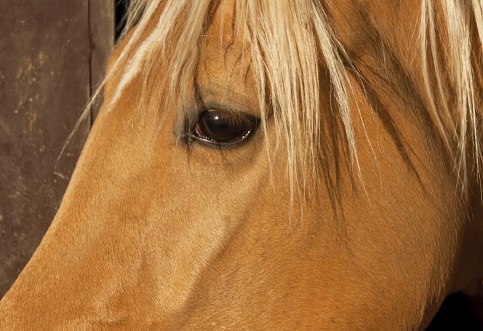ARCHIVE EQUINE NEWS STORIES
| Current news is available at TheHorsePortal.ca, Equine Guelph's online learning platform for practical, quick learning. Given the vast amount of information on horse health and welfare, Equine Guelph has archived its past news articles from 2002-2020. They are listed below, along with a search function available to find specific healthcare topics. | |
Talking Horse Welfare in Canada: How Do We See Our Industry?March 2020
Story by: Equine Guelph
 How would equine industry members describe the welfare status of Canadian horses? Which horses do they believe are the most at risk? And what do they believe threatens horse welfare? These are just some of the questions a research team at the University of Guelph set out to answer. In 2015, Master’s student, Lindsay Nakonechny, with the support of supervisor Dr. Katrina Merkies and PhD student Cordelie DuBois, created a survey to find out what adult members of the Canadian equine industry think about horse welfare. The online survey results revealed that participants largely agree on some of the top perceived threats to horse welfare, but also uncovered a few surprizes.
How would equine industry members describe the welfare status of Canadian horses? Which horses do they believe are the most at risk? And what do they believe threatens horse welfare? These are just some of the questions a research team at the University of Guelph set out to answer. In 2015, Master’s student, Lindsay Nakonechny, with the support of supervisor Dr. Katrina Merkies and PhD student Cordelie DuBois, created a survey to find out what adult members of the Canadian equine industry think about horse welfare. The online survey results revealed that participants largely agree on some of the top perceived threats to horse welfare, but also uncovered a few surprizes.
Almost one hundred percent of survey participants agreed that there were welfare issues in the Canadian equine industry, citing unwanted horses, inappropriate training methods, and unknowledgeable owners as some of the key issues within the industry. The majority of participants also highlighted ineffective legislation and the incapacity of law enforcement to protect horses as important.
When examining which groups of horses were perceived to be “at risk”, however, opinions were much more divided. Welfare issues connected to auctions or feedlot horses were less divided. Horses intended for slaughter and horses with owners who lack knowledge, were also suggested as affected groups by survey participants.
Lack of knowledge continued to emerge as a re-occurring survey theme. This, along with financial difficulties was considered one of the biggest challenges to “good” equine welfare. This supports the need for educational programs and targeted knowledge transfer. Gayle Ecker, director of Equine Guelph could not agree more. “What this survey tells us is there is a need to work together with strong support from the industry to extend the reach of welfare education,” says Ecker. “Improved information outreach to the industry incorporating human behaviour change approaches are vital if we are to have an impact on improving equine welfare.”
Close to 1,000 participants from multiple disciplines across Canada took the survey and self-identified as at least somewhat knowledgeable regarding horse care. Of the five options regarding horse care knowledge, participants were most familiar with body condition scoring (BCS; 78.6%,). Surprisingly, under 55% were aware of the national document: the Canadian Code of Practice for the Care and Handling of Equines (NFACC). Participants were even less familiar with the American Association of Equine Practitioners Lameness Scale (35.6%), the Five Freedoms of Animal Welfare (29.7%), and Equitation Science (20.4%).
Alongside examining the participants’ views on equine welfare within the industry, researchers also examined what factors, such as a person’s gender or view on their horse’s ability to feel emotions, most often affected their answers. Researchers found that whether a person considered their horse to be livestock or a companion animal, as well as what discipline they were involved in, most often influenced their perception of welfare issues. People who considered horses livestock, for example, were less likely to believe that horses at auction or on feedlots were an “at risk” group.
Additionally, eight scenarios were included in the survey, each outlining a scenario in which horse welfare could be compromised. Those ranked the most welfare-compromising involved horses being pastured without water during the wintertime and a horse given a sedative prior to training. While participants of this survey almost unanimously indicated that they believed horses could feel a variety of emotional states, this belief was not always reflected in their ranking of the scenarios. Several scenarios described situations in which horses could be suffering the effects of boredom or frustration (e.g. a horse on extended stall rest), but these scenarios were not considered as welfare-compromising as others. The intersection between what individuals think horses are capable of feeling and how this translates into practice (i.e. what situations cause horses to feel emotions such as boredom or pain) is an interesting one, and a challenge to all educators looking to bridge the gap between “knowing” and “understanding.”
To learn more about the survey questions, the diversity of the survey participant’s answers, and how they related to their involvement in the equine industry, read the full publication: https://www.ncbi.nlm.nih.gov/pubmed/30405030.